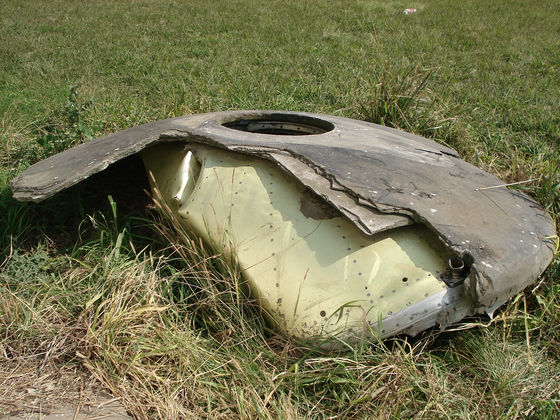'Soyuz T-13' that saved the stopped space station 'Salyut 7'

The Soviet Union space station '
The little-known Soviet mission to rescue a dead space station | Ars Technica
https://arstechnica.com/science/2014/09/the-little-known-soviet-mission-to-rescue-a-dead-space-station/

Salyut 7 is the eighth aircraft of the Soviet Union's space station development project 'Salyut Project'. After Salyut 6 was launched in September 1977, the development plan for the next space station 'Mir' was delayed, so the equipment prepared as a backup for the Salyut program was launched as 'Salyut 7'. There is a history of that.
Astronaut Anatoly Berezoboy and Astronaut Valentin Lebedev arrived at Salyut 7, which was launched on April 19, 1982, on the 'Soyuz T-5' on May 13. After that, I stayed for 211 days until December and performed the mission.
Astronaut Vladimir Lyakhov and Astronaut Alexandre Alexandrov have been staying since June 1983, but on September 9th during this stay, Lyakhov was turning the station for a radio wave transmission experiment. The aviator noticed that the pressure in the fuel tank was zero. Astronaut Alexandrov confirms a fuel leak. However, repairing fuel pipes was one of the most complex extravehicular activities, and no repairs were made during this mission due to the lack of training and equipment for the two crew members. .. Astronauts Lyakhov and Alexandrov left Salyut 7 in November 1983.
Next came three people, Leonid Kizim, Vladimir Solovyov, and Oreg Atkov. Of these, Astronaut Kijim and Astronaut Solovyov carried out a fuel pipe repair mission. Extravehicular activity has reached four times. The three of them stayed for a long period of 237 days from their arrival in February 1984 to October.
And after the three left, a problem broke out on February 11, 1985. According to Nikolai Bellakovsky, a writer who has collected various materials on this matter,
According to Bellakovsky, there were two possible options at this time: 'a manned space exploration program waits until the launch of Mir' or 'send repair personnel', but while the United States succeeds in the Space Shuttle program. The former, which suspends the space program for a year, was not an option for the Soviet Union, which had made many mistakes before the Salyut program, and had no choice but to choose the latter, even if it had to be docked manually with Salyut 7. That thing.
At that time, Soviet astronauts were trained to manually dock with the space station, but in reality they are basically doing automatic docking, and astronauts who have experience in manual docking in orbit There were only 3 people. Of these, Leonid Kizim was excluded from the list because he had just returned from Salyut 7 the previous year, and Vladimir Janibekov was chosen because Yuri Marichev had not been trained in EVA. It was. The only candidate for the flight engineer was Astronaut Victor Savinik.
The mission 'Soyuz T-13' carrying Astronaut Janibekov and Astronaut Savinik was launched on June 6, 1985. Astronaut Janibekov succeeded in docking with the rotation of Salyut 7 to the front bay of the two docking bays of Salyut 7. At this time, Astronaut Janibekov confirmed that the Salyut 7 solar array was not parallel (not facing the sun).
The inside of Salyut 7 was out of power and it was very cold, and the walls and equipment were covered with frost. Also, two out of eight batteries were unusable. The drinking water storage system was also frozen and there was no time to work, but Astronaut Janibekov and Astronaut Savinik modified the Salyut 7 solar array to face the sun using Soyuz's control system. After charging was complete, the battery was connected to the station's power grid and the station's functionality was successfully restored.
It is believed that the cause of the power outage was a malfunction of the sensor that monitors the charging status. This sensor was designed to cut the charging system to prevent overcharging when the battery is fully charged. However, at some point after the radio breaks, the sensor with battery number 4 breaks down, and when a charge command is received once a day, it is always judged that the battery is fully charged and the charge is canceled. It is thought that the entire battery was eventually used up.
In 1986, the year after the accident, Mir was launched, and the experimental equipment onboard Salyut 7 was relocated to Mir by the Soyuz T-15 crew. This was the last manned mission on Salyut 7.
After that, Salyut 7 was operated unmanned, but due to the economic collapse of the Soviet Union and Russia, funding for future missions was lost, and communication was lost again in 1990, February 7, 1991. , Re-entered the atmosphere without control. A part of the aircraft did not burn out and fell to Argentina and other places.

by Carloszelayeta
The mission of this Soyuz T-13 has been documentaryed three times in 1986, 2011, and 2017, and was made into a feature film in 2017.
Amazon.co.jp: Watch Salyut 7 (subtitled version) | Prime Video
Related Posts:








